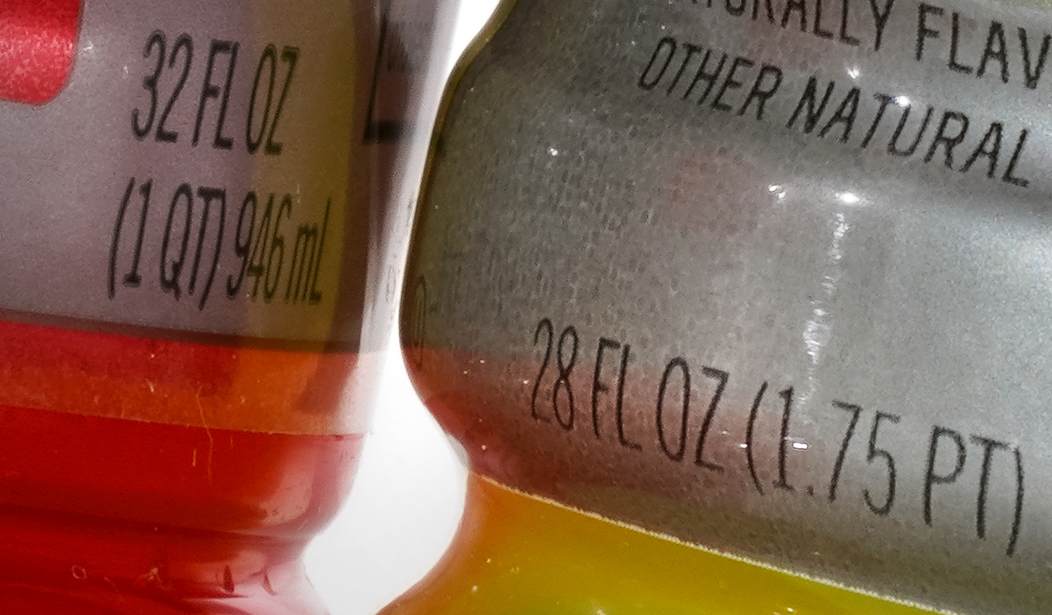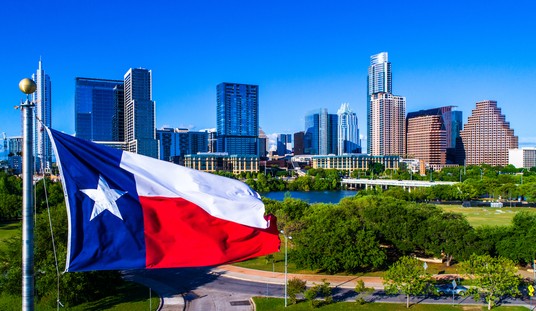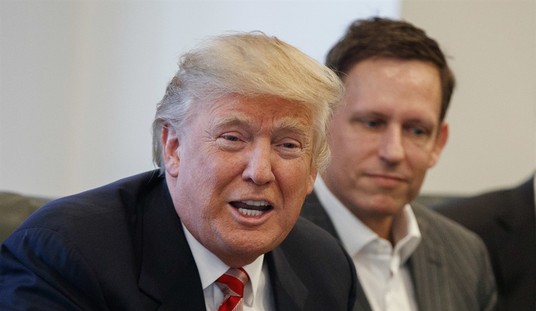We all know that inflation is eating away at our pocketbooks these days and that filling up at a gas station feels like visiting the proctologist. But have you caught yourself thinking, “Gee, that bag of chips I just bought for $4.49 seems kinda small?” It’s not your imagination—it’s happening all around you as companies try to cope with Biden’s record 8.26 percent inflation. Simply put, you‘re not only paying more, but you’re also getting less.
Inflation, stagflation and now shrinkflation. pic.twitter.com/hiqnUGs56W
— howardfineman (@howardfineman) June 7, 2022
From the Associated Press:
In the U.S., a small box of Kleenex now has 60 tissues; a few months ago, it had 65. Chobani Flips yogurts have shrunk from 5.3 ounces to 4.5 ounces. In the U.K., Nestle slimmed down its Nescafe Azera Americano coffee tins from 100 grams to 90 grams. In India, a bar of Vim dish soap has shrunk from 155 grams to 135 grams.
On a personal note, I went to a nearby Mexican food chain today and got a taco combo with fries and a soda. Don’t shame me, I was hungry. The total came to almost eight bucks, but when I reached into the bag, I was like, whoa, this little thingamabob is a taco? It felt like an extra French fry.
Consumer advocate and former assistant attorney general in Massachusetts Edgar Dworsky explains the phenomenon, saying shrinkflation “comes in waves. We happen to be in a tidal wave at the moment because of inflation.” From the AP:
Dworsky said shrinkflation appeals to manufacturers because they know customers will notice price increases but won’t keep track of net weights or small details, like the number of sheets on a roll of toilet paper. Companies can also employ tricks to draw attention away from downsizing, like marking smaller packages with bright new labels that draw shoppers’ eyes.
One thing reducing the size of packages does is allow companies to avoid the one thing they don’t want to do—raise prices. Domino’s Pizza, for instance, didn’t reduce its price for chicken wings in January—it’s still $7.99—but now you get 8 pieces instead of 10.
Shrinkflation isn’t new, experts say. But it gets worse in times like these when companies face rising costs for ingredients, packaging, labor, and transportation. Which is a fancy way of saying that Biden’s war on energy has jacked the price of gas up so much that companies are doing everything they can to cope.
Every once in a while, shrinkflation, also known as “down-switching,” can reverse; in good times companies face increased competition and actually lower their prices or introduce larger packages for the same price. But don’t hold your breath. Dworsky says once a product has gotten smaller, it’s probably going to stay that way. “Upsizing is kind of rare,” he said. It’s kind of like taxes or fees—once politicians introduce them, they rarely take them away.
Shrinkflation isn’t new, as we’ve said; it actually dramatically increased during the COVID pandemic. Here’s a list from 2021 from BusinessInsider of some of the more extreme examples:
- Walmart Great Value Paper Towels dropped from 168 sheets per roll to only 120, while the price stayed the same.
- Frito-Lay shrunk regular bags of Doritos from 9.75 ounces to 9.25 ounces.
- Hershey cut down its 18-ounce pack of dark chocolate Kisses by almost two ounces.
- Hefty’s mega pack went from 90 bags to 80 bags, at the same price.
- General Mills shrunk its “family size” boxes from 19.3 ounces to 18.1 ounces—a drop of nearly 10%.
- Tillamook decreased the size of its ice cream cartons from 56 ounces to 48 ounces.
- Some of Royal Canin’s cans of cat food now weigh 5.1 ounces, down from 5.9 ounces—but they still cost the same.
- Cadbury changed the shape of its famous Dairy Milk bars in 2013—and changed the size of them, too. The individual pieces now have rounded edges and contain nearly 10% less chocolate than before.
Remember, that’s before the current inflation crisis. It’s only gotten worse since.
Americans are hurting, and this hidden cost is just another example of how Biden’s policies are destroying the middle-class lifestyle. We’re being lectured constantly on trans ideology, diversity, threats to democracy, etc., but we’re ignoring the real problem: Life is getting increasingly unaffordable.
Simply put, you’re not getting what you thought you paid for.















Join the conversation as a VIP Member